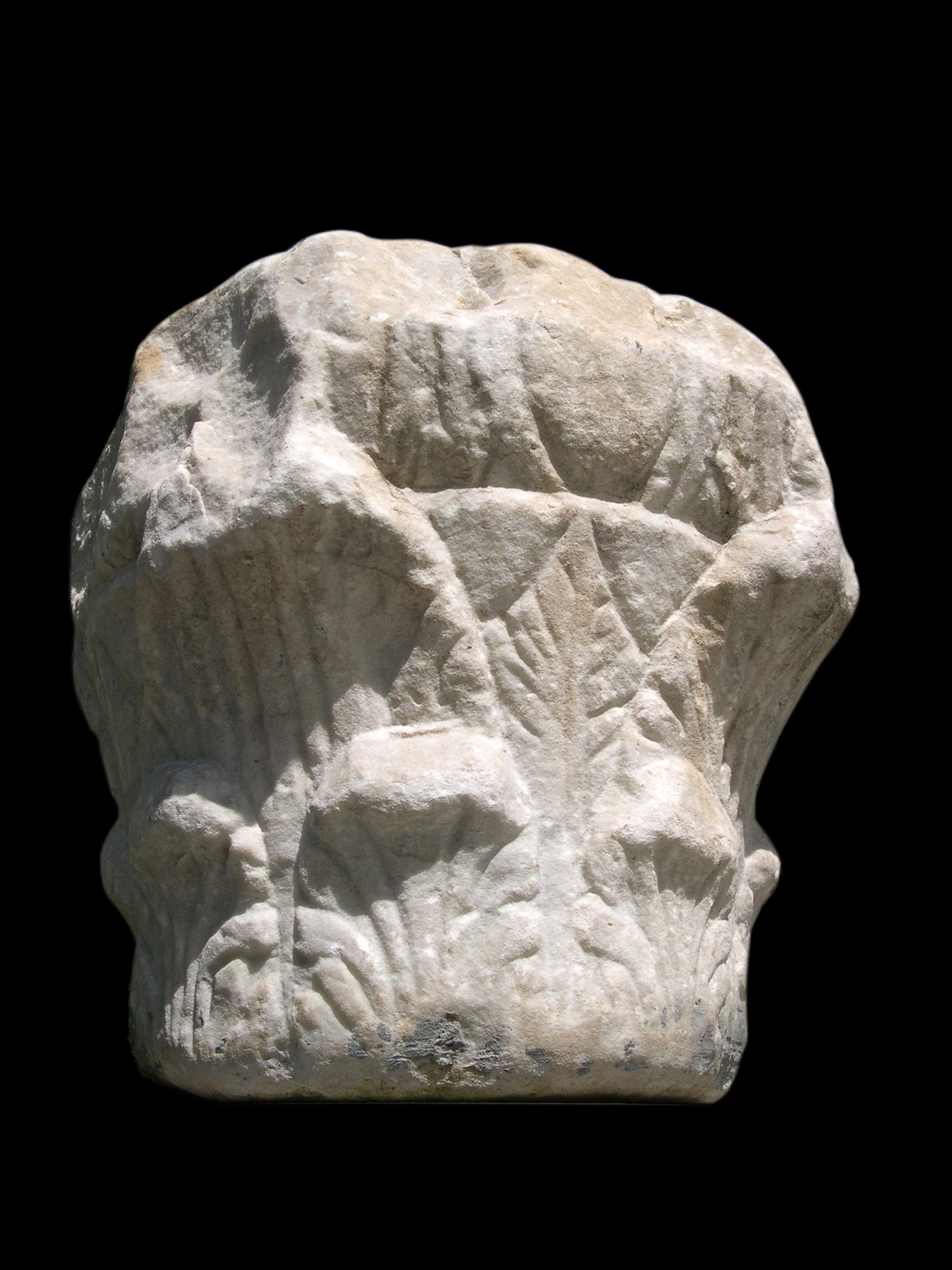Composite column capital
Badly eroded Composite capital, marked by a decidedly simplified handling of the foliage, with contours roughly rendered by means of incised lines. The first crown is formed by eight well-parted palmettes with a slightly curved tip and eight long flat lobes, outlined by deep incisions; at the bottom there is no vegetal membrane connecting the leaves. The four corners are taken up by four large and carelessly drawn acanthus leaves, characterized by a flat midrib indented with parallel incisions. The four central leaves, with sharply pointed shape, are not detached from the kalathos’ surface and are rendered with schematic grooves in the vain attempt to confer some plastic value to these exceedingly flattened vegetal elements. The capital is devoid of the stems bearing rosettes. A coarse groove marks the kalathos rim; the kyma decorating the echinus is formed by a large rounded egg, cut straight over the upper margin and held in a double casing with convex strip, sided by two large darts. The volutes and the moulded sides of the abacus are broken away. The patently flattened carving, the stylized handling of the decorative motifs, but most of all the awkward proportions and unbalanced disposition of volumes, together with coarse incisions and the absence or substitution of certain canonical elements point at a later chronology, around the middle of the IV century AD or in late antiquity.







